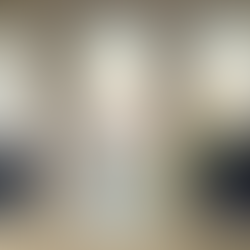"Hungary" for Budapest (and better puns)
- Nicole Behm
- Dec 9, 2021
- 7 min read
From Prague, we caught a train to Budapest. Fortunately, this one was only 7.5 hours and had no changes. We had packed sandwiches, but looking at the food and beer menu on the train prompted us or order a couple of beers ($1 each) and a sushi plate ($3)….and finished with apple crisp as a desert ($.55). I wouldn't even want to fathom what that would cost on a normal airline-type transit, but this cemented the fact that we were in Eastern Europe! It was delicious and the most amazing train meal, maybe ever, even just for the crazy cheap price. We arrived in Budapest around 8:15 pm. We bought a metro ticket and took the metro towards our place, then walked the last 5 minutes to check into our hostel.
We were welcomed by the host, Sandor, who proceeded to spend the next hour (or several hours is what it felt like after the long journey) going over brochures, maps, suggestions, and personal stories before finally checking us in and showing us our room. We quickly dropped our stuff and went to find a late night snack to tide us over. We found that many of the nearby restaurants close at 10, which surprised us given Budapest’s reputation for being another city that never sleeps - although we very much slept as much as we could out first night there. We woke up late the next morning and started the day with the famous New York cafe. We had briefly read that Hungary had a big coffee culture but not much more. Typically, countries who specialize in coffee also emphasize cheap coffee. And, typically, Eastern Europe is known for being cheap. So we were thoroughly unprepared for what we walked in to: a wait staff in suits and ties, live performers (first a string quartet, then piano), marble floors and delicate paintings, and it all meant $12 each for a cup of coffee (but hey, they were sprinkled with gold flakes?). After what may be the most expensive coffee we’ve ever drank (I won’t lie - it was DELICIOUS, plus we added on a Hungarian sponge cake), we headed to the market to get some lunch. The building was epic, but when it came to the actual market goods and varieties it was sort of a let down after those we had been to thus far. We ate langos for lunch, which are fried pieces of bread (think a flat, round funnel cake) topped with sour cream and cheese. Afterwards we ventured along the river, eventually making our way to the Christmas markets. There were 2 good ones that we had heard of from locals in Budapest, so we made sure to hit both.
At the markets, we found the Hungarian version of Trdelnik (called Kürtöskalács this time, because Hungarian is the toughest language in the world to learn #facts), drank mulled wine, and enjoyed all of the random stands offering local crafts, foods, and souvenirs. After hitting both markets, we had decided to go to the recently opened ice skating rink. Unfortunately, they were out of skates that evening so we were unable to partake in the festivities. Instead, we explored Hero's square and the nearby castle, before heading back to our quarter of town and grabbing some burgers from the food truck street nearby (Kyle's was a burger with langos buns, which was TOO MUCH FRIED BREAD).
The following day we headed to the baths. Yes, you read that correctly. Budapest is well-known for its thermal baths (the saying goes that if you scratch the earth anywhere in Hungary, a thermal spring will pop up) and there are numerous around the city. These baths are recommended as medical treatments for many conditions in Hungary, and are often prescribed by doctors for joint pain and similar ailments. While incredibly jealous, and wishing we had a doctor who prescribed us weekly time in a thermal bath - we took it into our own hands. We visited Gellert thermal bath first. The bath complex was built between 1912 and 1918 in the Art Nouveau style. It was damaged during World War II but then rebuilt. References to healing waters in this location are found from as early as the 13th century, and a hospital was located on this site during the Middle Ages. The water contains calcium, magnesium, hydrocarbonate, alkalis, chloride, sulfate, and fluoride as some of the "healing minerals" that make this much more than just hot water. The entire complex had beautiful mosaic walls. There are many different thermal pools, each with an exact temperature posted on a sign (or decorated in the mosaic motif) so you know where to find the cool, warm, and scalding hot baths. One thing we wish we had known beforehand: you need to either bring your own towel and sandals, or pay for the expensive ones at the gift shop. We did NOT bring these, and didn't want to pay the price...but we found an employee who we came up with a couple of pairs of flip flops that we bartered on...
After a few hours in the bath, we were feeling refreshed and went to explore more of the city. We walked up to the Budapest castle, which offers a fantastic view of the parliament building, the Danube river, and the Pest side of the city (Budapest is a city made up of 2 cities that were previously separated by the Danube River, Buda and Pest). We happened to catch the sunset overlooking the river and Pest from Fisherman’s Bastion, on the same hill as the castle. We stayed until night came, watching the city light up, before heading back home and then to City Park to ice skate. Since we had missed the day before, we pre-booked skates and entry for the evening. We made our own version of a mulled wine - cheap Merlot, a sack of oranges, and a packet of cinnamon boiled in a pot - in the hostel kitchen to bring with us to the skating rink. We ended up skating until they closed down for the evening, and then headed towards home to grab ramen for dinner (not exactly typical Hungarian, but sometimes we crave our favorite foods from back home too). After dinner, we had decided to try to find some local “dive” bars in Budapest. Not only did we find some amazing (and cheap) places - we ended the night with Nicole teaching a bartender how to make a martini and learning all about his career path (composer for music in movies, duh). We finally headed home after a successful and action packed day (and night). Side note: we also got some late-night food at the doner-kebab place across from our hostel. This was one of our few instances of getting a "tourist" price as the guy behind the counter charged is 4x what the actual cost was...and then feigned ignorance when we tried to argue.
We woke up the next day and headed to Margaret Island, a large "island" in the center of an extremely wide section of the Danube. We took the tram out, but walked the entirety of the island and back. We ate more langos before deciding we would definitely be heading to our next thermal bath. This time we went to Szechenyi Thermal Baths, which are the largest medicinal baths in Europe. These ones definitely had a younger clientele, and felt more like a party scene (in fact, every Saturday they hire a DJ and have a huge outdoor pool party). Once again, we stayed until close and we were forced to leave. As this was officially Thanksgiving back home, we decided to try some authentic Hungarian food for dinner (our own personal feast). Nicole had goulash and Kyle had chicken paprika for a satisfying meal (we also each split a dessert, trying to mimic adding on pie to full stomachs in line with a true Thanksgiving) before hitting the ruin bars.
Ruin bars are exactly what they sound like - bars built from ruins of abandoned buildings, stores, or lots. The area many have popped up in (also the same area we stayed in) was left to decay after World War II, so it was a perfect place to develop an underground bar scene - now a very popular trend in the city. We were half a block from Szimpla Kert, the first and most famous in the city, and one we headed to. There was actually an American in line in front of us whom we ended up sitting down and trading rounds of drinks with. When we finally decided to call it a night (at 4am, and they were just getting started there), we grabbed a quick snack (more kebabs, this time from a different, friendlier place) and went to bed. We woke up and found a spot to enjoy breakfast, before going back to pack and catch the bus to the airport. With another fairly simple airport experience (passports, PLF forms, vaccine cards, ect) we caught our flight and arrived right on time in The Netherlands.
Additional notes about Hungary:
- As mentioned above, it has consistently been called the most difficult language to learn. We gave it our typical best shot (trying our best to say hello/goodbye/please/thank you), but it was impossible, and the signage was not helpful at all. Luckily, most people there speak English as it is the only way to connect with the outside world.
- Also mentioned above: what a coffee scene they have here! Hungarians expect coffee breaks to be an event. They say that coffee simply tastes better out of a fine china glass, and that coffee breaks should be a minimum of 1 hour. It was a jarring, but fun, juxtaposition to the edgy, not-fancy-at-all rest of the city (and area in general).
- Both Prague and Budapest had amazing, but vastly different, kolaches. In Prague, they were similar to danishes that you'd order from a donut or coffee shop back home. In Budapest, they were mostly filling wrapped with a thin layer of pastry. Kyle was smitten with both methods!
Levi's shirt count: 223





















































































































































































Comments